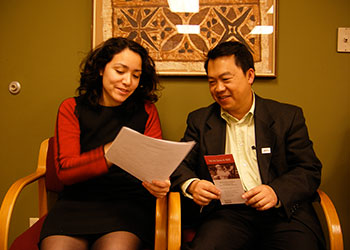News > Immigration In The United States
Dreams, Promises, and Eviction Threats
Posted on May 13 2019

As the executive branch continues to impose harsh anti-immigrant measures through unilateral actions and regulations, Congress moves much more slowly. The Dream and Promise Act of 2019, HF 6, was introduced March 12 with 208 sponsors. The most recent executive branch moves include a proposed regulation to bar all families with undocumented members from public housing.
The Dream and Promise Act provides a limited path to citizenship for some, as summarized by the National Immigration Law Center:
“H.R. 6 provides conditional permanent resident (CPR) status and a roadmap to lawful permanent resident (LPR) status and, eventually, U.S. citizenship for immigrant youth who entered the U.S. before age 18, have four or more years of residency, and graduated from high school (or the equivalent). And it provides an opportunity for people who currently have or who may be eligible for TPS or DED who have three or more years of residency to apply for LPR status and, eventually, U.S. citizenship.”
The Dream and Promise Act faces a long and uncertain road. It has been referred to House committees, though committee hearings have not yet been scheduled. If it gets committee approval, and if the House votes to pass it, the Dream and Promise Act will then go to the Republican Senate. To become law, it must be passed by the Senate and then signed by the president.
In contrast, the proposed Housing and Urban Development (HUD) regulation needs no Congressional action. The proposed regulation would bar all families with an ineligible immigrant member from housing assistance, including evicting them from public housing. The National Low Income Housing Coalition explains:
“Currently, HUD allows families to live together in subsidized housing even if one family member is ineligible so long as the housing subsidy is prorated to exclude the ineligible person from the assistance. Importantly, just because a household member is an ‘ineligible’ immigrant, it doesn’t mean that they are undocumented. Immigrants can have legal status and still not be eligible to receive housing assistance….
“The proposal would also threaten housing assistance for millions of households that remain eligible for assistance and consist only of U.S. citizens or eligible immigrants. It would require tens of thousands of housing agencies and private property owners to collect documents ‘proving’ the citizenship of more than 9 million assisted residents who have already attested, under penalty of perjury, that they are U.S. citizens, as well as the citizenship of future applicants for assistance. And it would require some 120,000 elderly immigrants to submit documents indicating their status. If individuals are unable to produce these documents in the timeframe permitted, they can lose their housing assistance and, in turn, lose their homes.”
According to HUD’s own analysis, the regulation would displace 108,000 residents including some 55,000 children who are U.S. citizens or legal permanent residents. Some 70 percent of the people who would be displaced—76,000 people—are legally eligible for housing assistance.
While the proposed federal regulation does not need Congressional approval, it does need to go through a comment and approval process. The 90-day period for public comment began May 10 and will run through July 9. To. learn more about submitting a public comment, check out the Center for Effective Government explanation, or subscribe to our Action Alerts. We will be posting suggestions on commenting on the HUD regulation in the near future.




